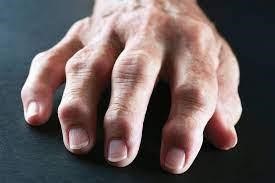A charge nurse in a long-term care facility notices the smell of alcohol on a nurse's breath. Which of the following actions should the nurse take first?
Document objective findings about the situation.
Assign clients to the remaining staff.
Call the supervisor to ask for another nurse.
Remove the nurse from the client care area.
The Correct Answer is D
Choice A Reason:
Document objective findings about the situation is incorrect. While documentation is important, it should not be the first action when the charge nurse suspects a colleague is under the influence of alcohol. Patient safety takes precedence, and immediate action to remove the nurse from patient care is necessary to prevent potential harm.
Choice B Reason;
Assigning clients to the remaining staff is incorrect. Assigning clients to other staff members is an appropriate step but should come after the nurse under suspicion has been removed from patient care to ensure their safety. Patient safety is the primary concern.
Choice C Reason:
Calling the supervisor to ask for another nurse is incorrect. Contacting the supervisor is a reasonable action, but it should be done after the immediate safety concern has been addressed by removing the nurse from patient care. This allows the supervisor to be informed of the situation and take appropriate action.
Choice D Reason:
Removing the nurse from the client care area is correct.When a charge nurse detects the smell of alcohol on a nurse's breath, the first and most immediate action should be to remove the nurse from the client care area to ensure patient safety. Alcohol impairment can severely compromise a nurse's ability to provide safe and effective care. Once the nurse is removed from patient care, further actions, such as documenting objective findings and contacting the supervisor, can be taken to address the situation and ensure appropriate follow-up, including any necessary interventions or investigations. Patient safety should always be the top priority in such situations.
Nursing Test Bank
Naxlex Comprehensive Predictor Exams
Related Questions
Correct Answer is D
Explanation
Choice A Reason:
Using fingers to push off from the bed or chair can strain the finger joints and worsen arthritis pain.
Choice B Reason:
Applying ice to an inflamed joint can provide temporary relief from inflammation and pain but is typically recommended for short periods and not as a long-term solution.
Choice C Reason:
C. Sleeping on a soft mattress may not provide adequate support for individuals with arthritis and can lead to joint discomfort. A mattress with appropriate firmness is often recommended for joint support.
Choice D Reason:
Engage in low-impact aerobic exercises. When teaching a client with arthritis, it is essential to provide instructions that promote joint health and reduce pain. Engaging in low-impact aerobic exercises is a beneficial recommendation. These exercises, such as swimming or stationary biking, can help improve joint flexibility, reduce stiffness, and enhance overall joint function without placing excessive stress on the joints.

Correct Answer is A
Explanation
Alcohol withdrawal can often lead to an increase in blood pressure. The autonomic nervous system becomes hyperactive during withdrawal, resulting in increased sympathetic activity, which can elevate blood pressure.
Constipation is not typically associated with alcohol withdrawal. However, chronic alcohol use can affect the gastrointestinal system and lead to digestive issues, including diarrhea or gastrointestinal bleeding.
Polyuria, which refers to excessive urination, is not a typical manifestation of alcohol withdrawal. However, alcohol use can affect fluid balance and lead to changes in urination patterns.
Bradycardia, or a slow heart rate, is not a common manifestation of alcohol withdrawal. Instead, tachycardia (an increased heart rate) is more commonly observed during withdrawal due to the hyperactivity of the autonomic nervous system.
Whether you are a student looking to ace your exams or a practicing nurse seeking to enhance your expertise , our nursing education contents will empower you with the confidence and competence to make a difference in the lives of patients and become a respected leader in the healthcare field.
Visit Naxlex, invest in your future and unlock endless possibilities with our unparalleled nursing education contents today
Report Wrong Answer on the Current Question
Do you disagree with the answer? If yes, what is your expected answer? Explain.
Kindly be descriptive with the issue you are facing.
